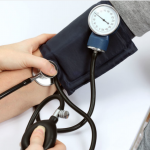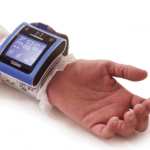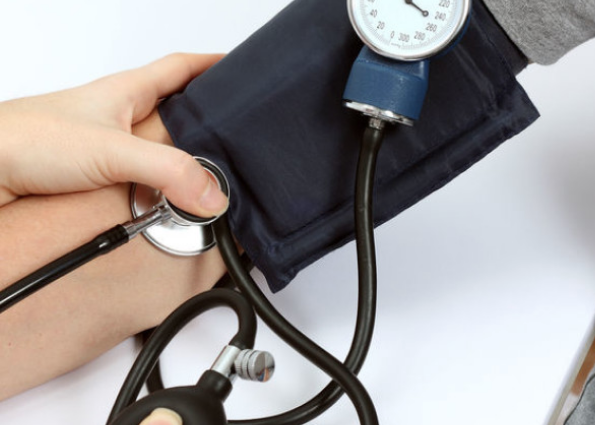Welcome back! Last week, we talked about a women’s health concern called Plasma cell vulvitis. If you missed that blog and would like to catch up, click HERE.
This week, we are going to talk about blood pressure (BP), and why it’s so vitally important to check your BP a certain way. This is a life or death blog, and many won’t have this information, so we encourage you to share it if you feel driven. Click the Facebook icon at the top of this page to do so when you are done reading.

Web MD sends me weekly emails, and I usually don’t open them. Just being honest. This one, however, caught my eye. I held onto it for a few weeks, and just now read it, and it gave me the passion to write a blog about the topic because I truly don’t think people know about this. It’s not widely shared.
When you go to the doctor for an issue or a wellness check-up, the nurse will take your blood pressure, correct? Do you know if they are using the right-sized cuff? Are they taking your pressure on both arms? If not, you may ask them to. Let’s chat…
So why would it be important to take a patient’s blood pressure on both arms? Harvard Medical School states, “A big gap between the two readings suggests a higher risk of cardiovascular disease…also If the pressure in one arm is higher, that arm should be the one upon which to base any treatments and to check your blood pressure in the future“.
A big difference between the right and left arm—more than 10 or more millimeters of mercury (mm Hg)—could be an early warning sign of cardiovascular disease, and that’s information worth having. It gives you time to make changes in your life, whether that be adding medication, changing what you eat, or getting more exercise, to avoid a potentially catastrophic event later on.
Please keep in mind, that small differences in blood pressure readings between the right and left arm are normal, but large ones may suggest the presence of artery-clogging plaque in the vessel that supplies blood to the arm with lower blood pressure.

It would appear the Mayo Clinic agrees with the above sentiments,
“People who repeatedly have an interarm blood pressure difference of 10 to 15 mm Hg for systolic pressure are more likely to have vascular disease. They also have a greater risk of developing cardiovascular disease and related complications during the next 13 years.
“A large difference in blood pressure measurement between your arms may be a sign of a health problem, such as:
- Blocked arteries in your arms (peripheral artery disease)
- Cognitive decline
- Diabetes
- Kidney disease
- Heart defect”
The next thing we should address is the size of your blood pressure cuff. Does it matter?
A BP cuff that is too large will give falsely low readings, while an overly small cuff will provide readings that are falsely high. Neither is helpful and why take a blood pressure reading if the result isn’t accurate? It can result in patients being overly medicated, or worse yet, death if a condition isn’t caught in its early stages.
What about those cuffs we use at home on the wrist, are they to be trusted? The Mayo Clinic weighs in on this topic again,
“To get an accurate reading when taking your blood pressure with a wrist monitor, your arm and wrist must be at heart level. Even then, blood pressure measurements taken at the wrist are usually higher and less accurate than those taken at your upper arm“.
Below is a 30 second video on how to determine if the cuff is the right size.
It’s very easy to get into a rush and not get an accurate blood pressure reading at your physician’s office. It is ok to ask them to take it differently, use a different cuff size, or take it on both arms. This is your body and you have a right to direct your healthcare. You are your best advocate!
This blog is not a replacement for sound medical advice, and many diseases, disorders, and syndromes have symptoms that overlap. Only a qualified medical professional can diagnose you. That said, if you think this blog may be helpful to others, please hit the Facebook Icon and share it on your personal pages. Thank you for reading us, we really do appreciate you!

Linda- Would you consider changing some wording in the ” This blog is not a replacement….” paragraph? A lot of folks get care from a Physician Assistant (PA), Nurse Practitioner (NP) or Midwife. The sentence “Only a physician can diagnose you” is outdated and untrue.
Oh Chris, you are SO correct! YES! I will change that…